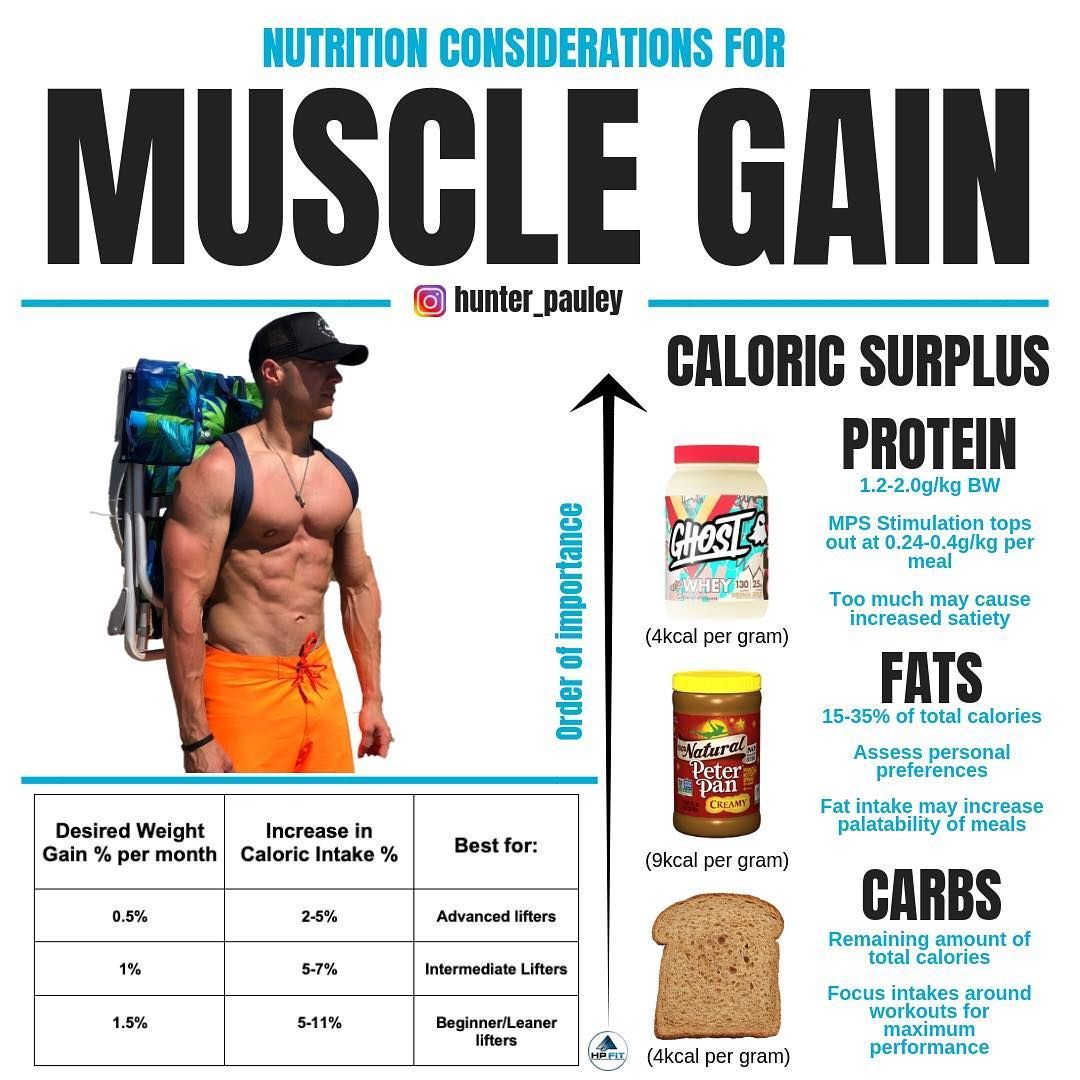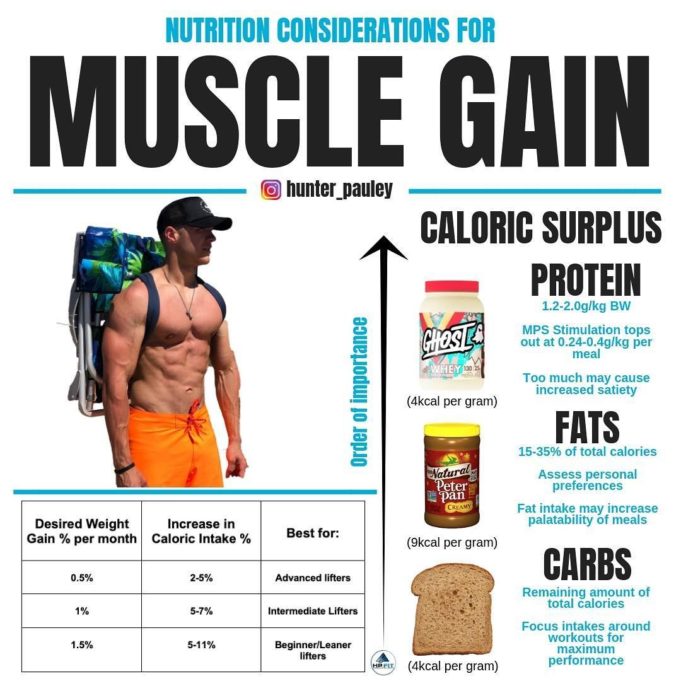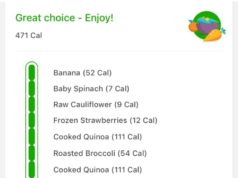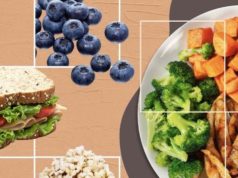How to reverse diet? It sounds like a magician’s trick, right? You’ve been diligently counting calories, and now you’re about to unlock the secret to eating more without gaining weight. Reverse dieting is the art of gradually increasing your calorie intake after a period of restriction, aiming to rev up your metabolism and create a more sustainable relationship with food.
Think of it as a metabolic makeover, where you ditch the restrictive diet and embrace a more balanced approach to eating.
Imagine this: You’ve been on a strict diet for weeks, and your body is feeling the strain. Your metabolism has slowed down, and you’re constantly battling cravings. Enter reverse dieting, a gentle approach that helps your body adjust to a higher calorie intake without throwing you off track.
It’s like slowly turning up the volume on your metabolism, allowing your body to adapt and thrive.
Understanding Reverse Dieting
Reverse dieting is a strategy used to gradually increase your calorie intake after a period of dieting or calorie restriction. It’s like gently coaxing your metabolism back to life after a period of deprivation. The goal is to increase your metabolic rate and improve your body’s ability to burn calories efficiently, which can help you maintain a healthy weight in the long run.
Benefits of Reverse Dieting
Reverse dieting can offer several benefits, including:
- Improved Metabolism:When you restrict calories for a long time, your metabolism can slow down as your body tries to conserve energy. Reverse dieting helps to jumpstart your metabolism by gradually increasing your calorie intake, which can lead to a more efficient calorie-burning machine.
- Increased Energy Levels:Remember those sluggish days after a long diet? Reverse dieting can help you feel more energized by providing your body with the fuel it needs to function optimally.
- Long-Term Weight Management:By gradually increasing your calorie intake, you can prevent the yo-yo effect of dieting and maintain a healthy weight more effectively. This approach is gentler on your body and can help you sustain a healthy lifestyle for the long haul.
Potential Drawbacks and Risks
While reverse dieting offers benefits, it’s essential to be aware of potential drawbacks and risks:
- Plateaus:You might experience a plateau in your weight loss journey during the reverse dieting process. This is because your body needs time to adjust to the increased calorie intake.
- Potential for Overeating:If you increase your calories too quickly or don’t pay attention to your hunger cues, you could overeat and gain weight. This is why a gradual and controlled approach is crucial.
Planning a Reverse Diet
Reverse dieting is a strategic approach to gradually increase your calorie intake after a period of dieting or calorie restriction. It helps you regain your metabolism, improve your body composition, and prevent weight regain. Planning a reverse diet requires careful consideration of your individual needs, goals, and progress.
Creating a Personalized Reverse Diet Plan
Creating a personalized reverse diet plan involves a systematic approach to ensure gradual calorie increases and maintain progress. Here’s a step-by-step guide to help you craft your plan:
- Assess Your Current Calorie Intake and Macros:Determine your current daily calorie intake and macronutrient ratios (protein, carbohydrates, and fats). This provides a baseline for your reverse diet journey.
- Set Realistic Calorie Increase Goals:Aim for a gradual increase of 100-200 calories per week. This allows your body to adapt and prevents metabolic shock.
- Track Your Progress:Monitor your weight, body composition, and energy levels closely throughout the reverse dieting process. Adjust your calorie intake and macronutrient ratios based on your progress.
- Focus on Nutrient-Dense Foods:Prioritize whole, unprocessed foods rich in nutrients. These foods provide satiety and support overall health.
- Listen to Your Body:Pay attention to your hunger cues and adjust your calorie intake accordingly. If you experience excessive hunger or fatigue, consider a smaller calorie increase or a more gradual reverse dieting process.
Sample Reverse Diet Plan
Here’s a sample reverse diet plan with meal examples and calorie adjustments. This plan serves as a guideline and can be adapted based on individual needs and preferences. Phase 1: Initial Adjustment (Week 1-2)* Calorie Increase:100-150 calories per day.
Macronutrient Ratio
Maintain your current macronutrient ratios.
Meal Examples
So you’ve finally reached your weight loss goal, congrats! But now you’re probably wondering how to “reverse diet” and avoid the dreaded weight gain. The key is to gradually increase your calorie intake while maintaining healthy habits. Remember, a balanced diet is crucial, and you can find some great tips on the best diet for weight loss website.
But hey, don’t go crazy and turn into a human garbage disposal! Just listen to your body, eat mindfully, and enjoy the journey back to your regular eating habits.
Breakfast
Oatmeal with berries and nuts.
Lunch
Reversing a diet is like trying to untangle a Christmas light string after a toddler’s been at it – you’re bound to get frustrated. But hey, at least you’re not adding to the problem by chugging diet soda, which, as you might be surprised to learn, why is diet soda bad for you.
Maybe instead of worrying about the “reverse” part, just focus on building a sustainable, enjoyable way of eating that doesn’t involve a sudden plunge into a sugary abyss. You know, like a well-organized Christmas light string – a thing of beauty.
Grilled chicken salad with mixed greens and avocado.
Dinner
Salmon with roasted vegetables.
Snacks
Greek yogurt with fruit, almonds. Phase 2: Gradual Increase (Week 3-4)* Calorie Increase:150-200 calories per day.
Macronutrient Ratio
Slightly increase carbohydrates or fats, depending on your goals.
Meal Examples
Breakfast
Whole-wheat toast with avocado and egg.
Lunch
Turkey wrap with hummus and vegetables.
Dinner
Lentil soup with whole-wheat bread.
Snacks
Apple slices with peanut butter, protein shake. Phase 3: Maintenance (Week 5 onwards)* Calorie Increase:Maintain your current calorie intake.
Macronutrient Ratio
Adjust your macronutrient ratios based on your progress and goals.
Meal Examples
Breakfast
Smoothie with protein powder, fruits, and vegetables.
Lunch
Tuna salad sandwich on whole-wheat bread.
Dinner
Chicken stir-fry with brown rice.
Snacks
Trail mix, cottage cheese with fruit.
Macronutrient Ratios for Reverse Dieting
The following table Artikels essential macronutrient ratios for different reverse dieting phases:
| Phase | Protein (%) | Carbohydrates (%) | Fats (%) |
|---|---|---|---|
| Initial Adjustment | 25-30 | 40-45 | 25-30 |
| Gradual Increase | 20-25 | 45-50 | 25-30 |
| Maintenance | 15-20 | 50-55 | 25-30 |
Note:These are general guidelines, and your ideal macronutrient ratios may vary based on your individual needs and goals. Consult with a registered dietitian or nutritionist for personalized recommendations.
Reverse Dieting Strategies
Reverse dieting is all about gradually increasing your calorie intake to help your body adjust to a new, higher level of energy expenditure. It’s a strategic approach to avoid weight gain while gradually boosting your metabolism and enhancing your overall health.
Think of it as a slow, controlled climb up the calorie ladder, where each step is carefully calculated and monitored.
Calorie Increase Strategies
There are a few different ways to approach the gradual calorie increase. The goal is to find a strategy that works best for you, based on your individual needs and preferences.
- Gradual Increase:This method involves adding a small amount of calories to your daily intake, typically 50-100 calories per week. This slow and steady approach allows your body to adjust gradually, minimizing the risk of weight gain.
- Macro Adjustment:This strategy focuses on increasing specific macronutrients, such as carbohydrates or fats, while maintaining your protein intake. This can be beneficial for individuals who want to increase their energy levels or muscle mass.
- Strategic Meal Additions:Instead of increasing your overall calorie intake, you can strategically add additional meals or snacks throughout the day. This can be a good option for people who struggle with feeling hungry or who have a busy schedule.
Tracking Progress and Adjustments
Tracking your progress is crucial for ensuring that your reverse diet is successful. By monitoring your weight, body composition, and energy levels, you can identify any potential issues and make necessary adjustments.
- Weight Tracking:Regular weigh-ins can help you monitor your progress and identify any potential weight gain. It’s important to remember that fluctuations in weight are normal, so focus on the overall trend rather than daily changes.
- Body Composition Analysis:This can provide a more accurate assessment of your progress by measuring your lean body mass and body fat percentage. This information can be helpful in determining if you are gaining muscle mass or simply gaining fat.
- Energy Levels:Pay attention to your energy levels throughout the day. If you feel sluggish or fatigued, it may indicate that you are not consuming enough calories. On the other hand, if you feel overly energetic or jittery, you may be consuming too many calories.
Common Pitfalls and Obstacles
While reverse dieting can be an effective strategy, it’s not without its challenges. Being aware of potential pitfalls and obstacles can help you stay on track and avoid setbacks.
- Overdoing It:One of the biggest mistakes people make is increasing their calorie intake too quickly. This can lead to rapid weight gain and can make it more difficult to adjust to the new calorie level.
- Lack of Patience:Reverse dieting requires patience and consistency. It’s important to remember that results don’t happen overnight. Stay focused on your goals and trust the process.
- Not Tracking Progress:Failing to track your progress can make it difficult to identify any issues or make necessary adjustments. Make sure to monitor your weight, body composition, and energy levels regularly.
Reverse Dieting and Exercise

Reverse dieting is all about gradually increasing your calorie intake while maintaining your hard-earned fitness gains. Exercise plays a crucial role in this process, helping you build muscle, burn calories, and prevent weight gain.
The Relationship Between Reverse Dieting and Exercise
Exercise complements a reverse diet by boosting your metabolism, increasing your calorie expenditure, and promoting muscle growth. This means you can safely increase your calorie intake without gaining unwanted fat. As you gradually increase your calories, your body adapts to the new intake, preventing sudden weight gain.
Workout Routine for Reverse Dieting
A workout routine for reverse dieting should focus on both strength training and cardio. This approach helps you build muscle mass, burn calories, and maintain your overall fitness.
Strength Training
Strength training is crucial for building muscle mass, which helps increase your metabolism and calorie expenditure. Aim for 2-3 strength training sessions per week, targeting all major muscle groups.
Reversing a diet is like trying to stuff a genie back in a bottle – you’ve got to be clever and strategic. First, you need to figure out what your body’s been craving – maybe a whole bag of chips?
Then, you slowly introduce those foods back in, but in smaller portions and with healthier options, like, say, a whole grain tortilla with a sprinkle of cheese. If you’re feeling brave and want to skip the exercise altogether, check out this guide on how to diet without exercise – it might just be the magic word to get you back on track! Remember, reversing a diet is a marathon, not a sprint.
So, take your time, listen to your body, and celebrate those small victories – like finally fitting into those jeans again!
- Monday:Upper Body (Chest, Shoulders, Triceps, Biceps)
- Wednesday:Lower Body (Legs, Glutes, Hamstrings, Quads)
- Friday:Full Body (Compound exercises like squats, deadlifts, and bench press)
Cardio
Cardiovascular exercise helps burn calories and improve your cardiovascular health. Incorporate 3-4 cardio sessions per week, focusing on activities you enjoy.
- Tuesday:30 minutes of moderate-intensity cardio (e.g., brisk walking, jogging, swimming)
- Thursday:30 minutes of high-intensity interval training (HIIT) (e.g., sprints, burpees, jump rope)
- Saturday:30 minutes of active rest (e.g., yoga, pilates, light stretching)
Rest and Recovery During a Reverse Diet, How to reverse diet
Rest and recovery are equally important as exercise during a reverse diet. When you exercise, your muscles break down. During rest, your body repairs and rebuilds those muscles, leading to growth and strength gains.
- Prioritize Sleep:Aim for 7-9 hours of quality sleep each night. Sleep is crucial for muscle recovery and hormone regulation, both essential for a successful reverse diet.
- Active Rest:Incorporate active rest days into your weekly routine. This can include light stretching, foam rolling, or yoga. Active rest helps improve flexibility, reduce muscle soreness, and enhance recovery.
- Listen to Your Body:Pay attention to your body’s signals and don’t push yourself too hard. If you’re feeling fatigued or sore, take a break and allow your body to recover.
Reverse Dieting for Different Goals
Reverse dieting is a flexible approach that can be adapted to various fitness goals, catering to individual needs and preferences. Whether you’re aiming for weight loss, muscle gain, or simply improved overall health, a well-structured reverse diet can help you achieve your objectives while promoting long-term sustainability.
Reverse Dieting for Weight Loss
Reverse dieting can be particularly beneficial for individuals aiming to lose weight. It allows for a gradual increase in calorie intake, which can help prevent metabolic adaptation and promote sustained weight loss. By slowly increasing calories, you can maintain a healthy metabolism, avoid plateaus, and reduce the risk of rebound weight gain.
A reverse diet for weight loss typically involves a slow and steady increase in calories, focusing on nutrient-rich foods and maintaining a calorie deficit.
Reverse Dieting for Muscle Gain
For individuals seeking to gain muscle mass, reverse dieting can be a valuable tool. It allows for a controlled increase in calories, which is crucial for providing the energy needed for muscle growth and repair. By gradually increasing calories, you can optimize muscle protein synthesis and enhance muscle growth.
A reverse diet for muscle gain typically involves a gradual increase in calories, focusing on protein-rich foods and ensuring adequate carbohydrate intake for energy.
Reverse Dieting for Overall Health Improvement
Reverse dieting can contribute to overall health improvement by optimizing metabolism, promoting hormonal balance, and enhancing energy levels. By gradually increasing calories, you can improve your body’s ability to regulate blood sugar, reduce inflammation, and enhance your overall well-being.
A reverse diet for health improvement typically involves a gradual increase in calories, focusing on whole, unprocessed foods and ensuring adequate intake of essential vitamins and minerals.
Final Summary: How To Reverse Diet
Reverse dieting isn’t just about eating more; it’s about building a healthy relationship with food and your body. It’s about finding a sustainable approach that allows you to enjoy delicious meals without the fear of weight gain. Think of it as a journey of self-discovery, where you learn to listen to your body’s cues and fuel it with the nourishment it needs.
So, ditch the restrictive diets and embrace the power of reverse dieting. It might just be the key to unlocking your metabolic potential and achieving lasting results.
FAQ Overview
Is reverse dieting only for people who have been on a diet?
While reverse dieting is often used after a period of calorie restriction, it can also be beneficial for anyone who wants to increase their calorie intake in a healthy and controlled way.
How long does it take to reverse diet?
The duration of a reverse diet varies depending on individual factors like starting calorie intake, fitness level, and goals. It can take anywhere from a few weeks to a few months.
What if I gain weight during reverse dieting?
It’s normal to experience some weight fluctuations during the reverse dieting process. The goal is to increase your calorie intake gradually, allowing your body to adjust. If you notice significant weight gain, you may need to slow down the increase in calories or make adjustments to your diet plan.
Can I exercise while reverse dieting?
Absolutely! Exercise is crucial for supporting your metabolism and building muscle mass, which can help you burn more calories. Make sure to listen to your body and adjust your workout routine as needed.
























